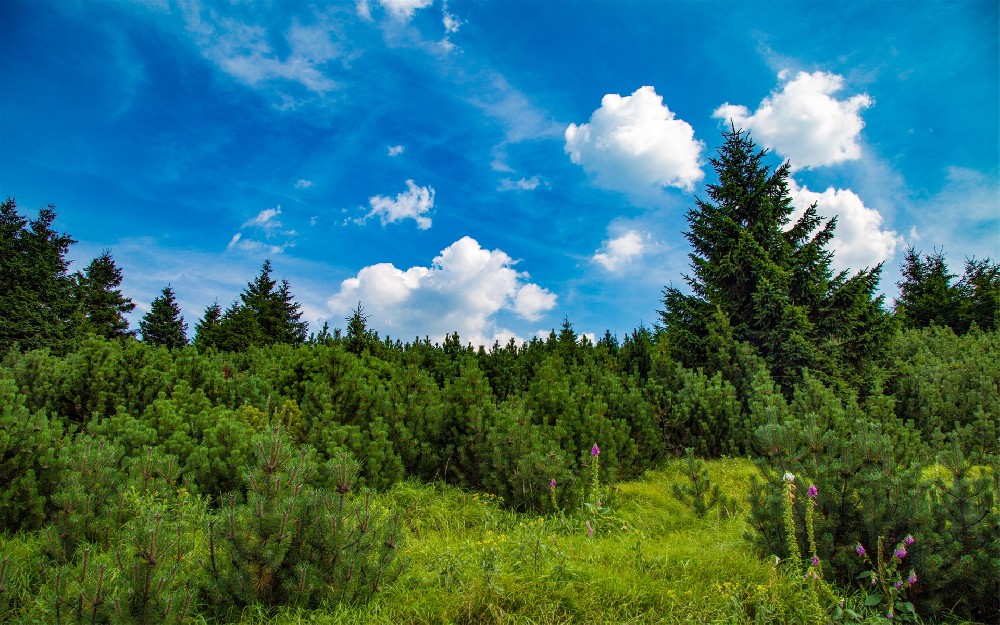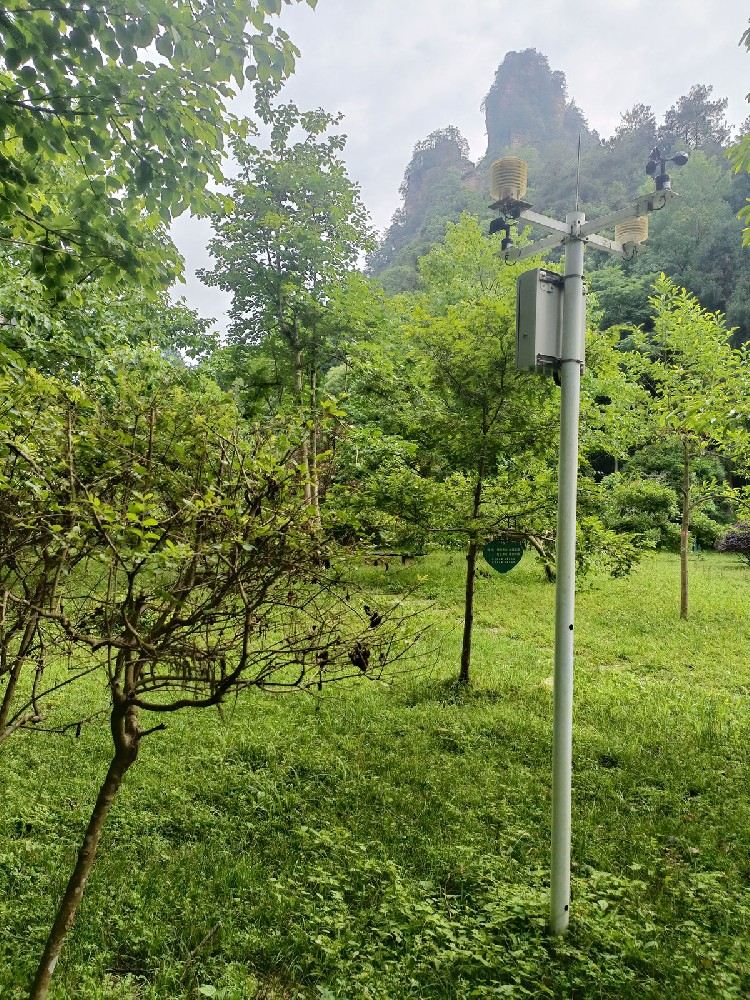

— Blogs —
—Products—
 Consumer hotline +8618073152920
Consumer hotline +8618073152920 WhatsApp:+8615367865107
Address:Room 102, District D, Houhu Industrial Park, Yuelu District, Changsha City, Hunan Province, China
Product knowledge
Time:2024-06-16 21:59:28 Popularity:1467
Forest weather stations are meteorological monitoring sites established specifically for forest management and fire prevention purposes. They are usually located in or around forests and are used to monitor forest climate, weather changes and various meteorological factors related to the risk of forest fires. Data from forest weather stations are important for the protection of forest resources, fire prevention, fire monitoring and fire fighting.

The main functions of forest weather stations include:
1. monitoring basic meteorological parameters such as temperature, humidity, wind speed, wind direction, etc.
2. assessing the risk of forest fires and issuing fire warnings in time.
3. monitoring changes in forest ecosystems and providing data support for ecological protection.
4. provide meteorological data required for forest resource management, such as water conservation, carbon sink and other functions.
5. support scientific research and promote research on forest meteorology, ecology and other fields.

Forest fire weather stations, on the other hand, are more focused on fire prevention functions, and their facilities and monitoring priorities usually include:
- Real-time monitoring of meteorological factors such as temperature, humidity, wind speed, wind direction and precipitation inside the forest, especially those parameters closely related to the occurrence and spread of fire.
- Installation of high-resolution cameras and thermal imaging equipment to capture timely images of fires as they occur and to quickly locate fire points.
- Equipped with an automatic alarm system that can automatically send alerts to relevant authorities when signs of fire are monitored.
- It is linked with ground monitoring stations, drones and satellite monitoring systems to build an all-round forest fire monitoring network.

Forest fire weather stations use a variety of technologies to monitor fire risk to ensure that potential forest fires are detected in time and measures are taken to prevent them. The following are some common technologies:
1. Remote sensing technology: Thermal imaging data and spectral data are collected from forest areas through satellite and unmanned aerial vehicle (UAV) remote sensing systems. These data help to identify forest hot spots, vegetation health and drought levels to assess fire risk.
2. Automated Weather Stations (AWS): These weather stations are equipped with sensors for temperature, humidity, wind speed, wind direction, precipitation, etc., and are capable of monitoring weather conditions in real time. By analyzing this data, the likelihood of fire spread can be assessed.
3. Flame monitors: Thermal imaging cameras or infrared sensors are used to detect flames in the forest. These devices are able to detect fires in time by monitoring heat sources in the darkness of the night.
4. Weather forecasting models: Weather models are used to predict weather trends over time, including temperature, precipitation, wind speed and other key factors. These forecasts are critical for fire risk management and emergency preparedness.
5. geographic information systems (GIS): combining remote sensing data and ground-based weather station data, spatial analysis is performed using GIS software to identify areas of high fire risk and propagation paths.
6. Artificial Intelligence (AI) and Machine Learning (ML): Historical weather data and fire events are analyzed through AI algorithms to predict future fire risk. These models can identify patterns and correlates of fire occurrence, thus improving the accuracy of early warning.
7. Communication technology: wireless, satellite or other means of communication are used to ensure unobstructed data transmission between forest weather stations and control centers or other monitoring sites.
8. Early warning system: integrating the above technologies to establish an early warning system capable of triggering an alarm automatically or manually to notify the fire prevention department to take appropriate measures when an increase in fire risk is monitored.
The integrated application of these technologies can improve the efficiency and accuracy of forest weather stations in monitoring fire risks and provide a scientific basis for forest fire prevention and response.
The design and operation of forest weather stations and forest fire prevention weather stations need to take into account the special characteristics of the forest environment, including the complexity of the terrain, the variability of the climate and the protection of biodiversity. At the same time, these weather stations also need to be highly durable and adaptable in order to maintain normal operation under various weather conditions.

Regarding the technical details of forest weather stations, the following are some of the key points:
1. Meteorological sensors: Forest weather stations are usually equipped with basic meteorological sensors such as temperature sensors, humidity sensors, wind speed and direction gauges, barometers, precipitation gauges, and so on. In addition, they may be equipped with special equipment such as flame monitors and thermal imaging cameras.
2. Data Acquisition and Transmission: Data acquisition at weather stations is usually accomplished through automatic recorders or data acquisition devices. These devices are capable of collecting sensor data at regular intervals and transmitting the data to a data processing center via wireless or wired means.
3. Data processing and analysis: Data from forest weather stations need to be processed and analyzed in order to facilitate the extraction of useful information, such as fire risk assessment, ecosystem changes, etc. This usually requires specialized data processing and analysis software.
4. Fire early warning system: Some forest weather stations are equipped with fire early warning systems, including automatic alarm devices, flame monitors and thermal imaging cameras. These devices are able to capture the fire situation in time when it occurs and send alerts to the relevant authorities through the alarm system.
5. Durability and adaptability: Forest weather stations need to have strong durability and adaptability in order to maintain normal operation under various adverse weather conditions. This includes waterproof, dustproof, shockproof and corrosion-resistant properties of the equipment.
Please note that the above examples and technical details are for reference only. Specific weather station designs and equipment configurations may vary depending on factors such as region, needs and budget.
Below are some specific cases of forest weather stations:
1. Case 1: The U.S. Forest Service (USFS) has set up weather stations in several forested areas in the U.S. to monitor forest fire risk and weather changes. These weather stations are usually equipped with equipment such as thermometers, hygrometers, wind speed and direction meters, as well as fire monitoring and warning systems.
2. Case 2: Natural Resources Canada (NRCAN) has set up several weather stations in Canadian forest areas to monitor forest fire risk, climate change and forest ecosystem changes. These weather stations have adopted advanced weather monitoring technologies and data transmission systems to ensure the accuracy and real-time availability of data.
3. Case 3: Zhangjiashan National Forest Park has set up meteorological stations within the forest for monitoring forest fire risks, meteorological changes and ecosystem services. These weather stations are equipped with a variety of meteorological sensors and monitoring equipment, as well as data processing and analysis software.
Related recommendations
Sensors & Weather Stations Catalog
Agriculture Sensors and Weather Stations Catalog-NiuBoL.pdf
Weather Stations Catalog-NiuBoL.pdf
Related products
 Combined air temperature and relative humidity sensor
Combined air temperature and relative humidity sensor Soil Moisture Temperature sensor for irrigation
Soil Moisture Temperature sensor for irrigation Soil pH sensor RS485 soil Testing instrument soil ph meter for agriculture
Soil pH sensor RS485 soil Testing instrument soil ph meter for agriculture Wind Speed sensor Output Modbus/RS485/Analog/0-5V/4-20mA
Wind Speed sensor Output Modbus/RS485/Analog/0-5V/4-20mA Tipping bucket rain gauge for weather monitoring auto rainfall sensor RS485/Outdoor/stainless steel
Tipping bucket rain gauge for weather monitoring auto rainfall sensor RS485/Outdoor/stainless steel Pyranometer Solar Radiation Sensor 4-20mA/RS485
Pyranometer Solar Radiation Sensor 4-20mA/RS485
Screenshot, WhatsApp to identify the QR code
WhatsApp number:+8615367865107
(Click on WhatsApp to copy and add friends)
